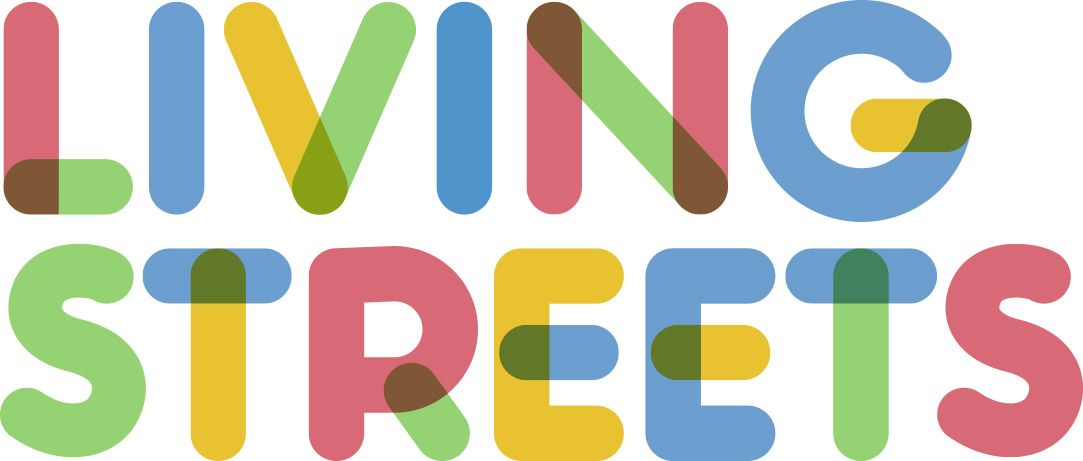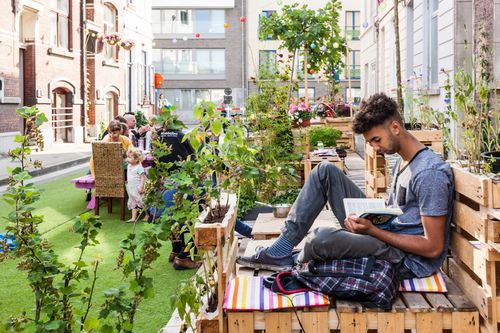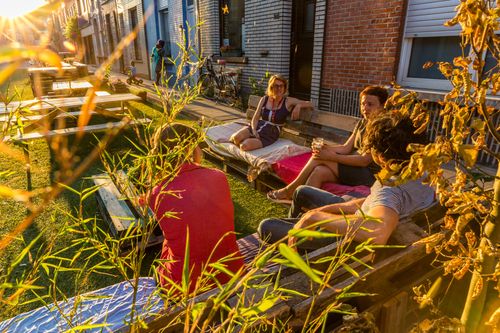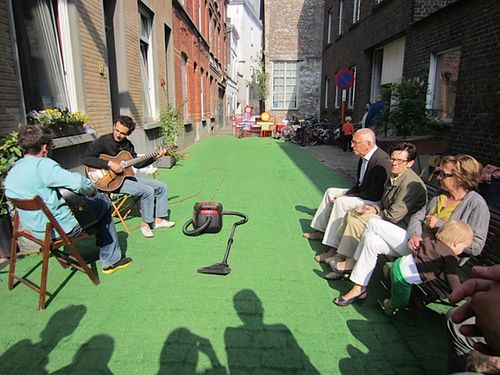EUKI Living Streets
How to experiment new forms of city life

The Ghent pioneering
Imagine your neighbour knocking on your door: “Hi, how are you? Do you have a few minutes? I have an idea I want to share with you… Imagine that we could temporarily transform our street into a beautiful green meeting place for the neighbourhood? We would remove the cars, just for a few months and see what happens. What do you think?”
In 2013, precisely these kind of simple questions inspired the inhabitants of the first two Living Streets. In the meantime, the Living Street triggered the imagination of hundreds of citizens and led to more than 50 Living Streets in Ghent and inspired many other cities.

Dreaming of a sustainable and social future
Thanks to Living Streets, hundreds of citizens in Ghent could work together to create a street of their own. After dreaming and coming up with ideas, the residents rolled up their sleeves, unrolled the turf, set up barbecues, created meeting places and so much more. By creating their own Living Street, these citizens were experimenting with the sustainable mobility of the future, creating a new approach to urban space and reinforcing social links by multiplying interactions among citizens
New ways of co-creation
The Living Streets explored and developed new ways of collaboration among the citizens in Ghent, municipal services, companies and many more city stakeholders. They were doing this by challenging each other in a smart way in terms of thinking, acting, understanding one another and learning.
The Ghent Living Streets demonstrated how to put co-creation in practice to find creative solutions for social challenges. All parties involved have always seen Living Streets as an experiment: successes and failures provide lessons for anyone keen to continue building Living Streets.
For the citizens, a Living Street functions as a common project and as such, an impulse for dialogue and dynamics with their neighbours, other street users and the municipality. During the experiment, they look for answers and solutions to problems that arise while organising the Living Street. Knowledge, experience and concepts are tested in a learning-by-doing approach that will make life easier in the unfolding sustainable and sociable city.

It all started in Ghent
The Living Street is the result of a project initiated by the City of Ghent. In 2012 the City asked a group of citizens, entrepreneurs and civil servants to imagine a sustainable future for their city. Their vision can be found in their agenda for the future: a network of car-free zones built around central squares, with rapid transit bike lanes, public transit, and neighbours talking in the street (“The Trojan bike”). The group realised that only a vision by itself would not change the world. To make it really happen, they launched concrete experiments, such as the Living Street (“Leefstraat”) and tried to make their dreams of the city of tomorrow visible today.
The power of a temporary network
The front-runners of the first hour organised themselves for a couple of years in a temporary network: The Trojan Lab. The Lab connects collaborating citizens, businesses, city services and organisations in Ghent to bring about a new way of city governance. The Lab -through its unique approach- demonstrates that structural changes are possible and that experimenting and envisioning are solutions which can take away humans’ innate resistance to change. This approach can help to achieve sustainable, sociable and climate-neutral cities in a better, faster and co-creative way.

